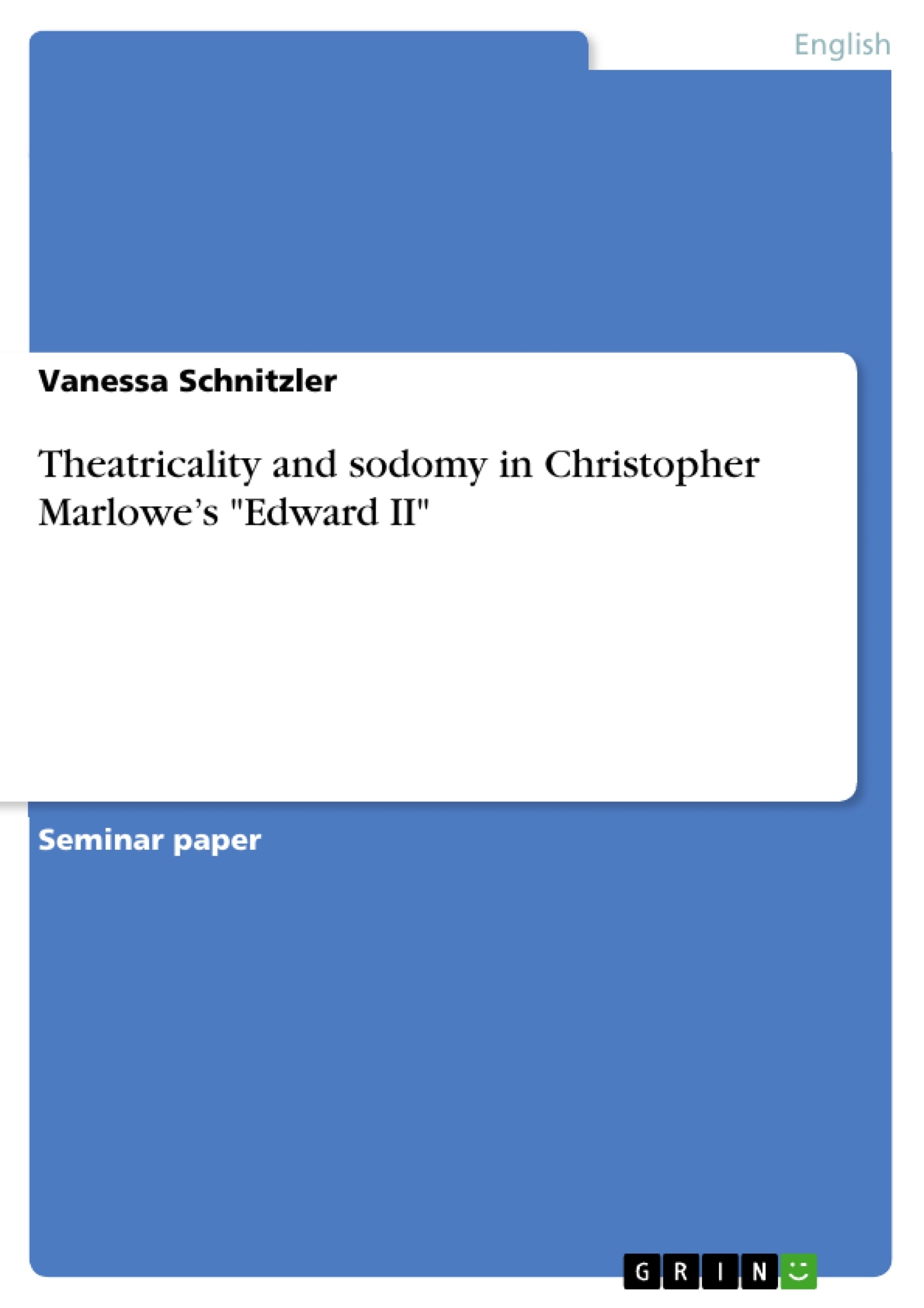Let me introduce the structure outline of my paper: In a first step, I’m going to have a close look at the nature of homosexuality and male friendships in Elizabethan England. In this part, I will mainly refer to theories put forward by Paul Hammond in his essay “The Renaissance“ as well as in Mario DiGangi’s essay “Marlowe, Queer Studies, and Renaissance Homoeroticism“.
The Elizabethan “concept” of homosexuality actually differs greatly from what we might expect and may even seem bewildering at first. However, to create in our minds a picture of the Elizabethan culture, we will have to make an effort to let go of the clichés that are anchored in our own. In doing so, we can only rely on the few historical sources we have about Elizabethan culture. Therefore, we have to remember that we can never truly recreate the big picture. Here, Thomas Laqueur’s milestone book Making Sex as well as Ina Schabert’s chapter about the one-sex model from Englische Literaturgeschichte. Eine neue Darstellung aus der Sicht der Geschlechterforschung will come in support of my theories.
The following chapter will be devoted to the status of sodomy in Renaissance England. It is vitally important to understand its political dimension, as suggested by both Alan Bray and Mario DiGangi, and the threat it was said to have exercised on the Elizabethan order of the universe.
In a final step, I’m hoping to offer a new explanation for the allegation of sodomy against Christopher Marlowe as expressed in the Baines Libel. I will try to further the debate about this doubtful document by establishing a connection with Sara Munson Deats and Lisa S. Starks’s article “’So neatly plotted, and so well performed’: Villain as Playwright in Marlowe’s The Jew of Malta”. The notion of the theatre will thus come to play an important part in my interpretation of the Baines Libel.
Each part of my work will also include a substantial amount of text analysis in support of the interpretations offered.
Table of Contents
- Introduction
- Homosexuality and Male Friendships in Elizabethan England
- “Homosociety” and the One-Sex Model
- Friendships and Love
- The Status of Sodomy
- In Terms of Law
- The Libel against Edward II
- The Baines Libel
- The Theatre as Sodomite
- Mistaken Identity
- The Pleasure and Peril of Dramatic Art
- Conclusion
Objectives and Key Themes
This paper aims to analyze the role of homosexuality and male friendships in Christopher Marlowe's play "Edward II", specifically focusing on the concept of "sodomy" as a political and social construct in Elizabethan England. It explores the relationship between the play's depiction of male intimacy and the historical context of the Elizabethan era, including the societal views and legal consequences of homosexual behavior.
- The nature of homosexuality and male friendships in Elizabethan England
- The legal and political status of "sodomy" in Renaissance England
- The connection between theatricality and the allegation of sodomy against Marlowe
- The influence of literature and art in shaping perceptions of reality
- The importance of aesthetic detachment in dramatic art
Chapter Summaries
The first chapter provides a brief overview of the historical context surrounding the play, focusing on the cultural views and norms regarding male intimacy in Elizabethan England. The one-sex model, which viewed women as inferior to men, is analyzed, and its implications for the perception of homosexual behavior are explored.
The second chapter examines the legal status of sodomy in Elizabethan England, highlighting the political dimensions of the offense and the significance of the death penalty for those convicted. The chapter contrasts the legal system of England with that of Germany, emphasizing the different historical contexts and the evolution of legal treatment of homosexuals.
The third chapter delves into the allegations of sodomy against Edward II and their connection to the Baines Libel, which accuses Marlowe of atheism and other transgressions. It analyzes the play's depiction of Edward's relationship with Gaveston, focusing on the political implications of the king's favoritism and the threat it posed to the social order.
The fourth chapter explores the role of the theater in the Elizabethan era and its relationship to the concept of sodomy. It investigates the notion of mistaken identity, where Marlowe's dramatic representations of societal flaws were mistaken for authenticity, leading to accusations of sodomy. The chapter concludes by analyzing the importance of aesthetic detachment for playwrights, examining the consequences of losing control over their artistic creations.
Keywords
The core focus of this text lies in the examination of homosexuality, male friendships, and the concept of sodomy in Elizabethan England. Key themes include the one-sex model, the legal status of sodomy, the political and social implications of homosexual behavior, and the influence of theatricality in shaping societal perceptions.
- Quote paper
- Vanessa Schnitzler (Author), 2005, Theatricality and sodomy in Christopher Marlowe’s "Edward II", Munich, GRIN Verlag, https://www.grin.com/document/81056



